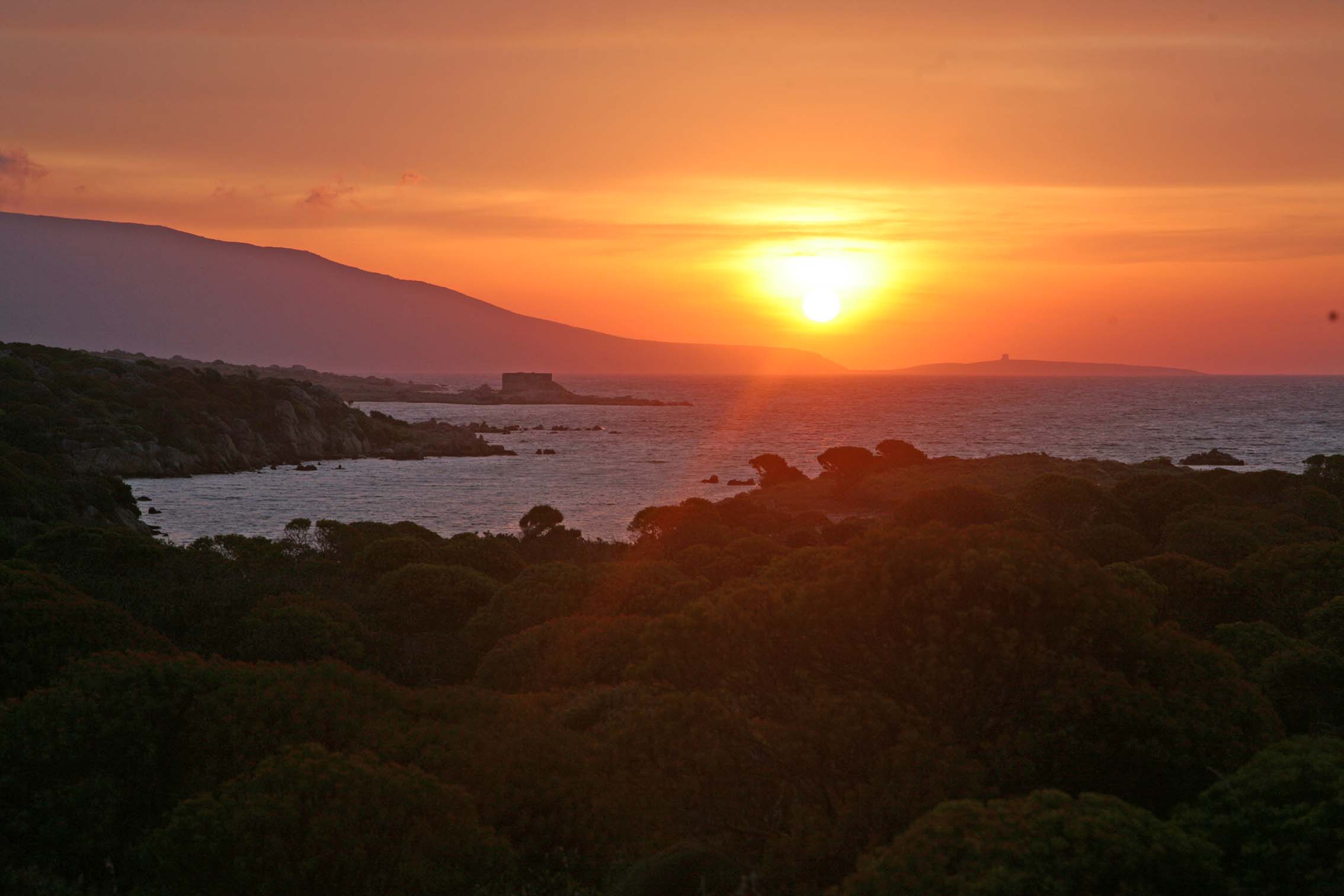Asinara Park
Geography
The island of Asinara is located at the northwestern tip of Sardinia, between Punta Colondri to the south (40°59′ N), Punta dello Scorno to the north (41°07′ N), Punta Salippi to the west (4°15′ E) and Punta Sabina to the east (4°06′ E).
It has an area of about 52 square kilometers and a straight-line length of about 17.5 kilometers. The width varies from 290 m in Cala di Scombro to 7 km in the northernmost part of the island, from Punta Grabara to Punta Sabina. The coastal perimeter is about 110 km.
The island is characterized by large areas of rock outcrops, with vegetation cover mostly represented by Mediterranean scrub; only the Elighe Mannu area in the northern part of the island is the most extensive forest formation, represented by holm oak forest (Quercus ilex), also affected in the past by reforestation works.
The island consists of four small mountain ranges connected by isthmuses.
The northern one is the largest, both in extent and altitude, and includes the highest relief of Punta della Scomunica (408 m asl), which connects to the south with the Campu Perdu plain.
South of this plateau outcrops the shale complex of Mount Ruda (215 m asl), which occupies a hilly area of about 2 square kilometers, bounded by the underlying isthmus of Punta Marcutza (195 msm).
In the south-central part of the island, south of the area called Stretti, is another group of reliefs, including those of Punta Tumbarino (241 msm), Punta Romasino (215 msm) and Guardia del Turco (128 msm). The ridge line of this relief is oriented in a NO-SE direction, similar to the reliefs of Capo Falcone and Monte Forte in the Nurra. This sector is bounded by the two rias of Cala Scombro di Dentro and Scombro di Fuori and is the narrowest point on the island.
The southern core consists mainly of the granitic intrusion of Punta Maestra Fornelli (265 msm) and gray shales identical to those on the Stintino Peninsula. The connection between this area and Isola Piana is broken by the Fornelli Strait whose bathymetries do not exceed 5 meters.
Different erosive action is evident along the coasts, reflecting the exposures of its lithotypes: in fact, the west coast is steep and rocky, almost totally inaccessible from the sea due to cliffs that reach 200 meters in places. Here, the coastline, which is affected by the strong action of sea currents and wave motion of quadrant IV winds, is characterized by the absence of sandy deposits and thrashing furrows that deepen for a few meters.
On the contrary, the east coast is generally low and rocky, with beaches located mainly in Fornelli, Sant’Andrea, La Reale, Trabuccato, Punta Sabina, and Cala Arena, with the presence in the same areas of backdune ponds.



















